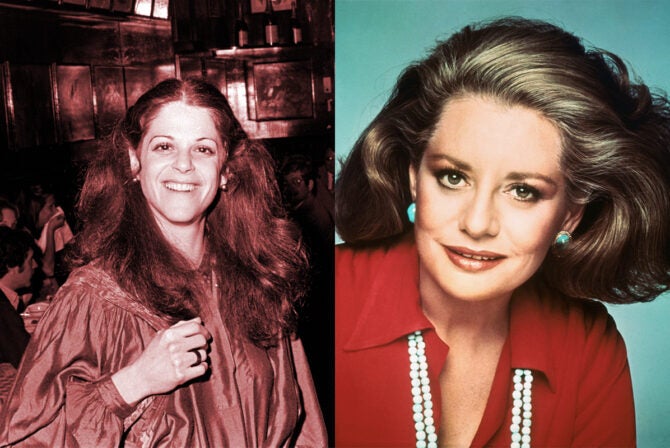The hospice nurse lets me in to the apartment on her way out. Hattie, 54, is in bed and imminently dying of bone cancer. She had been an avid knitter, weaver, painter, furniture maker, and quilter. The Adult Protective Services case I’m investigating is for alleged self-neglect.
I walk into the apartment, a sizeable open studio that takes up the second floor of an old Victorian, and the space declares itself the home of an artist.
Filled with an explosion of color, every space is filled with art— there is a rainbow of draped quilts, batiks, and knitted and crocheted afghans on the walls and floor, and on the few pieces of furniture. Some have tattered edges, many pieces are unfinished. The textiles each sing of long-labored, intricate works of love. There are animal sculptures glued to the ceiling, and Jackson Pollock-like splatters of color on the only empty spaces of wall.
Still, with all its warmth of fabric and color and creativity, the loft echoes in its cold emptiness, sans people. I wonder if there is no one here because Hattie’s experiences, like mine, were not easy. So perhaps she tried to make do by creating something beautiful out of the textures of her life.
I come to Hattie’s bed at the far side of this room, and introduce myself. A thick, pink, knitted cap on her head is adorned with a bright yellow knitted flower with a pink rhinestone in the middle. The thickness and ornateness of the hat is in stark contrast to her paper-thin almond-colored skin and gaunt, hollowed-out cheeks. A pair of paint-flecked orange cowboy boots sit at the floor at the end of the hospital bed.
She is too tired to speak, but her bony hand reaches out to me in greeting. I put one of my hands in hers. We sit together enveloped in the colorful warmth of a life richly expressed through these very hands.
Clearly, beauty was a priority over function for Hattie—a weaving loom and accompanying bench sit in lieu of a couch. The hospice nurse mentioned that there is no toilet seat in the bathroom, but even a plunger handle has been decorated with yarn.
Hattie’s green eyes hone in on me, and in a gurgled, lung-metastasized voice, she says, “I want to die here at home. Please. Please. I want to die at home.” To die amongst the colorful menagerie of all her things. I understand.
Her wisp-of-an-arm, surprisingly unadorned by jewelry or polish, reaches up. She grabs a needleless syringe filled with morphine that lies next to five others on a nightstand—a prepared hospice cocktail that the nurse has just left. She squirts it in her mouth and lays back in the hospital bed, shutting her eyes. Shortly after, she unclenches her skeletal hand, and I slide my thick hand on top.
We sit without words, only her labored breaths and wet, pneumonic coughs dot the air. After every cough, her body shutters, she shakes her head, and a single tear streams down her cheek. The pain of bone cancer is especially cruel, a throttling ache in the fibers of one’s being.
There is an infantilization that happens during the dying process—Hattie is just a weak, helpless, bundle of need—very much like how she came into this world. I want to pick up her skeletal frame, hold her in my arms, and rock her like I would my child when she is ill. I want to fatten her up with a bowl of rich Matzo ball soup and tell her it will all be OK.
But it won’t be OK, and the only thing I can try to give Hattie right now is a dignified death. She does not utter another word again.
In frenzied calls to her six siblings, and to several of her siblings’ grown children, they tell me that no one can come take care of her.
“Yes, yes,” I say in response to “Don’t you understand I have…” my daughter’s recital, business meetings, scheduled trips… I don’t understand, but pragmatism, not judgement, is my priority.
She cannot die at home because there is no one to stay with her. I cannot bear to tell her.
At the office, I ask for funds in order for aide service to come for Hattie to be able to die at home. I have been denied many times before, but I have to try again.
In a hastily convened meeting with the higher ups, I plead, “Because she has no money, it shouldn’t mean we can ignore her wish to die at home. Can we provide 24-hour aide service?” Silence. Blank faces.
I know that these are not cruel administrators–but their task is a daunting one–to serve an infinite amount of need in our county with only a finite pool of money for services. I am under no illusion that this will work, but I change tactics and switch to a language they are more apt to understand. I present some cost figures on how we’d be using the same amount of money on aide service in a few weeks that we’d budget on any other client in a year.
“It’s her fair share, she’s just using it in a shorter period of time,” I reason. I am flabbergasted when they agree.
I call the aide agency, and I coordinate with them and hospice. She can die at home.
At 11 that night, I get a text from the hospice nurse that the county aide was holding her hand when Hattie died that night. I go outside, look up at the sky, and recite the Mourner’s Kaddish into the cool, night air.
Hattie’s siblings have her buried in a purple, batik dress and covered in a rainbow, sequined afghan that she had crocheted.
*
As is the case after many a death of the neglected, I am left wondering if I will die alone and what kind of legacy I’ll leave. I wonder if I will ever be able to express the textures of my life as creatively as Hattie. I am inspired to make art, to shout art from the rooftops. I want, however, to use art to share and to connect with people in a way that seemed not to avail itself to Hattie.
Sometime that week, I awake at 1 a.m. I wake my 10-year-old, and I ask her to draw with me.
“Now?” she asks, groggily.
“NOW!” I declare, and she yells, “Yay!” at the prospect of engaging in a forbidden act on a school night.
 Pajama clad, weary-eyed, and marked with color, we create funky doodles together into the night. I have no delusions that we are making great art—but they are funky and great for us, and we are coloring outside the lines together–in a rare way that makes us both so very happy.
Pajama clad, weary-eyed, and marked with color, we create funky doodles together into the night. I have no delusions that we are making great art—but they are funky and great for us, and we are coloring outside the lines together–in a rare way that makes us both so very happy.
Legs entwined, we fall asleep with pens still in hand, surrounded by art.








